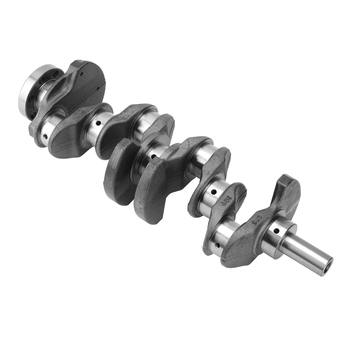Unlocking the Power of Heat Treatment
Have you ever wondered how automotive components, such as crankshafts, can withstand extreme conditions? The answer lies in the art and science of heat treatment. By manipulating the microstructure of metals, engineers can significantly enhance their strength, durability, and resistance to wear and tear.
The Magic of Crankshaft Heat Treatment
Crankshaft heat treatment is a specialized process that involves heating and cooling the crankshaft to alter its physical properties. This process results in a stronger, more resilient component that can handle the rigors of an internal combustion engine. Intrigued? Let's delve deeper into the world of crankshaft heat treatment.
Understanding the Heat Treatment Process
Crankshaft heat treatment comprises three main stages: heating, soaking, and cooling. Each stage plays a crucial role in transforming the metal's microstructure and enhancing its properties.
Heating: The First Step
The initial heating stage involves raising the temperature of the crankshaft to a specific range, typically between 800°C and 950°C. This heat causes the metal's atoms to rearrange themselves, forming a new microstructure called austenite.
Soaking: The Transformative Phase
Once the crankshaft reaches the desired temperature, it undergoes a soaking process. During this phase, the component is maintained at a constant temperature for a predetermined period. Soaking ensures uniform heating, allowing the entire crankshaft to transform into austenite.
Cooling: Where the Magic Happens
The final stage of crankshaft heat treatment is cooling, also known as quenching. By rapidly cooling the crankshaft, the austenite transforms into martensite, a hard and brittle microstructure. This transformation significantly increases the component's strength and durability.
Tempering: The Secret to Balanced Strength
While martensite provides exceptional hardness, it can also make the crankshaft brittle and prone to cracking. To address this issue, engineers employ a process called tempering. By reheating the crankshaft to a lower temperature, typically around 200°C to 400°C, some of the martensite transforms into a more ductile microstructure, such as bainite or pearlite. This transformation results in a balanced combination of strength and flexibility.
Practical Applications of Crankshaft Heat Treatment
Crankshaft heat treatment plays a vital role in various industries, from automotive to aerospace. Here are a few practical examples of its applications:
- Automotive: Heat-treated crankshafts are essential for high-performance engines, ensuring optimal power output and longevity.
- Aerospace: The demanding conditions of flight require components with exceptional strength and durability. Heat treatment helps achieve these requirements, ensuring the safety and reliability of aircraft engines.
- Heavy Machinery: Industrial equipment, such as excavators and cranes, rely on heat-treated crankshafts to handle heavy loads and harsh operating conditions.
Choosing the Right Heat Treatment for Your Crankshaft
Selecting the appropriate heat treatment process is crucial for achieving the desired properties in your crankshaft. Factors to consider include the base metal, desired hardness, and intended application. Our company offers a wide range of heat treatment services tailored to meet your specific needs.
Conclusion: The Future of Crankshaft Heat Treatment
As technology continues to advance, so too does the world of crankshaft heat treatment. Researchers are constantly exploring new methods and materials to push the boundaries of strength and durability. By staying informed and working with experienced professionals, you can ensure your crankshaft components remain at the cutting edge of performance and reliability.
For more detailed information, please visit our official website: Crankshaft Heat Treatment




